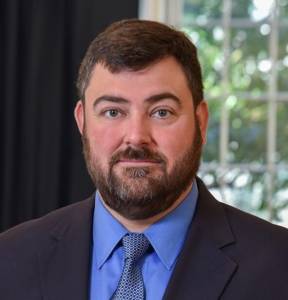Publications
In May of 2008, I reported on substantial changes to the Shoreland Protection Act. New Hampshire’s shoreland protection laws, located at RSA Chapter 483-B, have again undergone changes.
Most notably, what was formerly known as the Comprehensive Shoreland Protection Act (CSPA) has been renamed and amended. The Act’s new name, the Shoreland Water Quality Protection Act (SWQPA), is intended to draw attention to the purpose of the legislation: protecting the quality of New Hampshire’s public waters.
Administered by the New Hampshire Department of Environmental Services (DES), the SWQPA regulates the development and land use planning of upland areas surrounding the State’s lakes, rivers, and coastline. The most recent changes are considered by many to be landowner-friendly, relaxing several requirements for shoreland property development, while clarifying others. All changes to the SWQPA took effect June 30, 2011.
Shoreland Water Quality Protection Act
Application Process
The permit application process has become more applicant-friendly, providing the possibility for speedier approvals, eased waiver criteria, and an oversight mechanism in the event of denial.
A permit by notification (PBN) process has been explicitly instituted for small projects (for example, those affecting less than 1,500 square feet) that propose no impact on water quality and are otherwise designed to follow DES rules. Instead of the standard application process, the qualifying project may proceed once DES sends written confirmation that the applicant has supplied necessary documentation.
Waiver criteria have been clarified under the amended SWQPA. A waiver may be granted for a project that will have no materially adverse impact on the environment and for which strict adherence to the SWQPA’s standards would provide no material benefit to the public. Another category, unmentioned in previous versions of the statutes, specifically permits waivers to accommodate the needs of persons with disabilities.
The review periods for DES have been shortened, requiring DES to respond more quickly to applications, while the changes have given the applicant additional time to supply information as may be requested by DES.
As an oversight mechanism for the decision making of DES, denials must be reported to the Shoreland Advisory Committee, a group of shorefront owners and tradepersons formed to oversee and comment on the State’s shoreland policies.
Shoreland Water Quality Protection Act
Landowner Requirements / Standards
The SWQPA implements changes providing greater flexibility for landowners and reduces penalties for violations.
As before, existing, nonconforming structures may be repaired, replaced in kind, or reconstructed in place, or may be altered or expanded if the structure is made to more closely conform with the design standards of the law. The amendments permit complete demolition and reconstruction of a nonconforming structure in the waterfront buffer as long as it is located further from the water than the previous structure.
A previous restriction, strictly limiting and conditioning impervious coverage to thirty percent of protected shoreland area on a lot, has also been relaxed. The amendments permit a greater percentage of impervious coverage provided that a stormwater management system is designed and implemented to capture and treat additional stormwater runoff and erosion.
The law requires a woodland buffer to protect against erosion and other factors affecting water quality. The woodland buffer requires that a percentage of overall vegetation within 150 feet of the residence line must be maintained in an ‘unaltered state’ by the landowner. The law previously required a percentage of woodland buffer dependent on the size of the subject lot, up to fifty percent. That requirement, however, has been replaced with a uniform requirement of at least twenty-five percent, irrespective of lot size.
Within the first fifty feet of the woodland buffer, shoreland owners are required to maintain a waterfront buffer containing a certain amount of trees, shrubs and groundcover. The tree scoring system, already used to determine the requisite amount, measures each tree in the buffer by trunk diameter. The recent changes afford a greater number of points for larger trees while also encouraging shrubs, sod and other ground cover.
The penalties for violating the SWQPA have been altered. The penalty for violating the law has been capped at $5,000 per continuing occurrence, down significantly from exposure to previous civil penalties of up to $20,000 per day of the violation.
*Ari B. Pollack is admitted in New Hampshire and Massachusetts.
